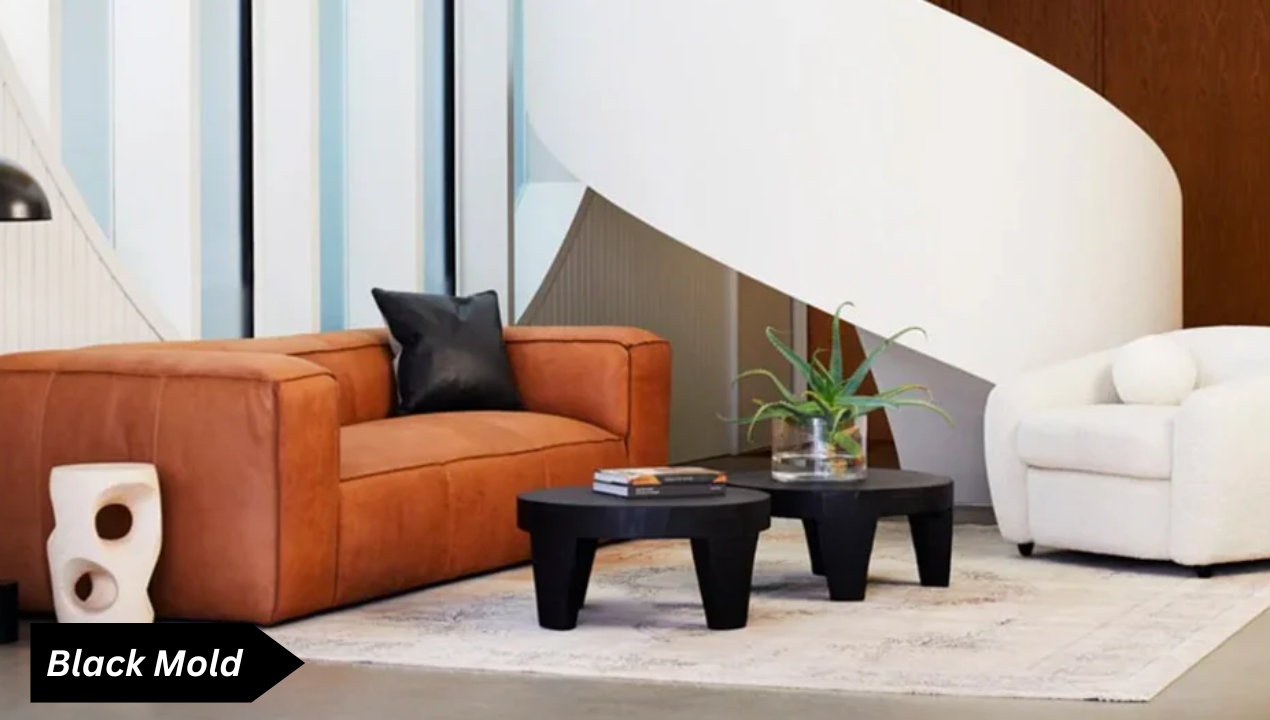Before diving into the cleaning process, it’s crucial to identify whether your leather couch is indeed affected by mold. Look out for signs such as musty odors, dark spots or patches, and a fuzzy texture on the surface.
It’s essential to distinguish mold from other stains like dirt or grease to determine the appropriate cleaning method.
Precautions
Safety should always first when dealing with mold. Wears protective gears such as goggles, and a mask to prevent exposure to mold spores. Additionally, ensure proper ventilation in the cleaning area to minimize the spread of mold particles.
Materials Required
Gather the necessary cleaning supplies before starting the mold removal process. You’ll need items such as white vinegar, baking soda, a soft brush, microfiber cloths, and a commercial leather cleaner or conditioner.
Methods to Remove Mold
There are various approaches to removing mold from a leather couch, ranging from natural remedies to commercial cleaners. Natural solutions like white vinegar or a baking soda paste can be effective in combating mold without harsh chemicals. Alternatively, you can opt for commercial mold removers specifically designed for leather surfaces.
Step-by-Step Cleaning Process
Once you’ve gathered your materials, it’s time to tackle the mold. Begin by gently brushing off any loose mold spores with a soft brush. Next, apply your chosen cleaning solution to the affected areas and gently scrub with a microfiber cloth. Repeat the process until the mold is completely removed, then wipe down the couch with a damp cloth to remove any residue.
Post-Cleaning Care
After successfully removing the mold, take preventive measures to inhibit future growth. Keep your leather couch clean and dry, avoiding exposure to moisture or humidity. Consider applying a leather conditioner regularly to maintain the integrity of the leather and protect it from mold and mildew.
Professional Help
If the mold infestation is severe or persists despite your efforts, it may be time to seek professional assistance. A professional cleaning service specializing in mold removal can thoroughly assess the situation and provide targeted solutions to address the issue effectively.
FAQs
- Can I use bleach to remove mold from my leather couch?
- It’s not recommended to use bleach on leather as it can damage the material. Stick to safer cleaning alternatives like vinegar or commercial leather cleaners.
- How often should I clean my leather couch to prevent mold growth?
- Regular maintenance is key. Aim to clean your leather couch at least once every few months, especially in humid climates or if it’s exposed to moisture frequently.
- Will sunlight help in preventing mold growth on my leather couch?
- While sunlight can help inhibit mold growth to some extent by drying out the leather, prolonged exposure can also cause damage. It’s best to strike a balance and avoid direct sunlight for extended periods.
- Can I use a hairdryer to dry my leather couch after cleaning?
- It’s not recommended as excessive heat can damage the leather. Instead, allow the couch to air dry naturally in a well-ventilated area.
- Is it possible to prevent mold from returning after cleaning?
- While no method guarantees complete prevention, maintaining a clean and dry environment and regularly conditioning your leather couch can significantly reduce the likelihood of mold recurrence.
Conclusion
Removing mold from a leather couch requires patience, diligence, and the right tools. By following the steps outlined in this guide and taking proactive measures to prevent future mold growth, you can ensure that your leather furniture remains clean, healthy, and mold-free for years to come.
